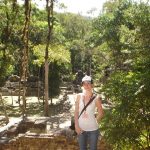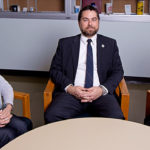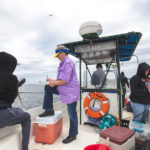Florida college students get to tour the state to study water quality
Julianna O’Bar said she got to experience a “sampler plate” of research while taking part in a five-week course in which she and other college students were able to travel across Florida to study water quality issues.

“I’m getting to see a lot of different ecosystems in Florida,” said O’Bar, a senior majoring in marine biology at the University of West Florida.
In addition to UWF, students from Florida Atlantic University, the University of North Florida, University of South Florida and Florida Gulf Coast University participated in the course, which spanned the entire state from Atlantic coast to the Keys, ending at UWF where students studied how watersheds affect water quality. Each university hosted the students for a week of the course, which is funded by the Florida Institute of Oceanography.
“They toured all these different universities to see what kind of research those universities are doing in their backyard,” said Barbara Albrecht, coastal communities coordinator with the Askew Institute for Multidisciplinary Studies at UWF. Albrecht helped teach the students during their time in Pensacola.
During the students’ visit to the Pensacola area, they took water samples from Bayou Texar, monitored seagrasses in Santa Rosa Sound and Bruce Beach and toured the Gulf Ecology Division of the U.S Environmental Protection Agency facility and Blackwater River State Forest.
“Because they go to so many different institutions, they get to meet all these different people where everybody is doing slightly different things,” said Dr. Jane Caffrey, a biology professor in the UWF Center for Environmental Diagnostics and Bioremediation. Caffrey taught the students on the final leg of the course, which included work both in the field and in the laboratory.
“Students learn all these methods,” Caffrey said. “They get to experience these different habitats and see the breadth of environments in Florida.”
At the end of the course, students participated in a symposium at UWF where they presented findings from their research, which included measuring levels of microplastics, turbidity, chlorophyll, nitrate and total suspended solids in local waterways and around the state.
“What we really try to emphasize here is, what happens on the land has a big influence on the water,” Caffrey said of the course.



